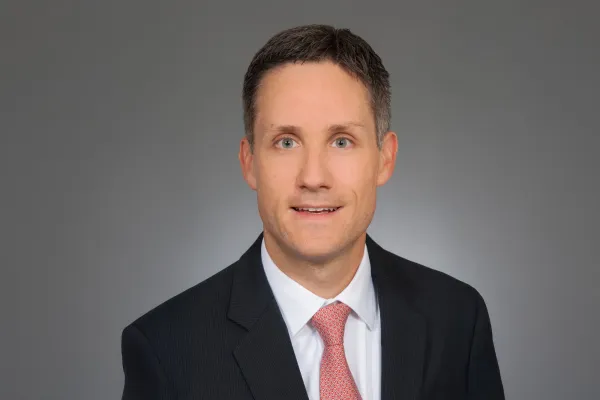When pension funds began to dip their toes into the murky world of alternatives a few years back, some nervous trustees overseeing these giant buckets of retirement cash wondered if investing in such loosely regulated, semitransparent products was a smart move. The answer, from a performance standpoint at least, has been a resounding yes. Despite a raft of negative headlines, hedge funds — the biggest component of the alternative asset class, followed by private equity — fared far better than equities in 2008’s market meltdown: Chicago-based Hedge Fund Research’s HFRI fund-weighted composite index fell 18.49 percent through November, compared with a 38.96 percent drop for the Standard & Poor’s 500 index.
But pension funds face other headaches when it comes to managing their alternative investments. They have to cope with the complexity of researching hedge fund risk management, as well as operational and technological infrastructure and investment transparency. Sometimes they face the biggest migraine of all: writing a check to cover a bad bet. That was the case with the $25 billion Pennsylvania State Employees’ Retirement System Pension Fund, which invested in index fund derivatives during the bull market on the theory that doing so was cheaper than investing directly in the index funds themselves. It knew that the bet required it to pay money if the indexes declined, but Pennsylvania did not anticipate the stock market rout. As a result, it paid counterparties $1.5 billion in 2008 and may owe an additional $1 billion in 2009 based on estimates calculated in October.
“These are truly extraordinary times, and they have given rise to circumstances that people didn’t anticipate,” says Robert Gentzel, director of communications and policy for the Pennsylvania fund.
The biggest headache for pension funds active in the alternatives space is proving to be liquidity, as many hedge funds, including big, established institutions, have made it difficult for investors to cash out and, in some cases, have halted redemptions entirely. Greenwich, Connecticut–based Tudor Investment Corp. in November stopped redemptions from its $10 billion BVI Global Fund, pushing investors looking for cash to sell more-liquid holdings like mutual funds and equities.
To get back to their target allocation levels, some pension funds have had to sell private equity and real estate portfolios in the secondary market at big discounts, says James Francis, CEO of Paradigm Asset Management Co., an institutional firm in White Plains, New York, with about $1 billion under management. “They’re squeezed for cash and have few alternatives to getting liquidity,” he notes.
Since the bear market of 2001–’03, when hedge funds turned in outsize performances as equities cratered, corporate and public pension plans have aggressively increased their allocations to alternative investments. According to Casey, Quirk & Associates, a research firm based in Darien, Connecticut, public and corporate plans had next to no exposure to hedge funds or funds of funds in 2001 and had just 8 percent allocated to venture capital, real estate and private equity. By 2007, plans were devoting 1.6 percent to hedge funds and funds of funds and 9.8 percent to other alternatives.
Foundations and endowments have been much more aggressive in their allocations to alternatives. According to the National Association of College and University Business Officers, endowments with more than $1 billion in assets held 30.9 percent in alternatives. Pension plans turned to alternatives in search of diversification and the promise of absolute returns that they could count on regardless of overall market performance. Another incentive was the Pension Protection Act of 2006. The legislation requires companies to have enough money on hand to cover their pension liabilities, while limiting their ability to average their assets and liabilities — a practice known as smoothing — over many years. As a result, many plans have implemented so-called liability-driven approaches to investing. These strategies often involve using fixed-income vehicles to cover a plan’s anticipated liabilities, while devoting a smaller portion to alternatives to boost returns.
The moves have paid off, and even now — as hedge funds struggle to navigate through one of the roughest periods in their history — experts say pension plans won’t rush for the exits because their exposure to hedge funds has mitigated some of the stinging losses in both the stock and bond markets. What’s likely to change, though, is how they build their alternatives portfolios, how they pick their managers and what they’re willing to pay them. Funds of funds have also failed to prove their worth in most cases this year, with the Bernard L. Madoff Investment Securities scandal revealing that many did little due diligence to uncover the fraud.
Kathryn Hall, CEO and CIO of San Francisco–based Hall Capital Partners, which builds and manages multiasset portfolios for high-net-worth investors, says bigger retirement plans with sizable allocations may pull back from alternatives until the market settles down, and small and midsize funds may ramp up their allocations more slowly.
Mark Anson, the former CIO of the California Public Employees’ Retirement System who is now president of $152 billion Chicago asset manager Nuveen Investments, agrees that pension funds won’t bail out on alternatives. “What will change is the how,” he asserts. “Pension funds, for example, might be more conservative on their allocations to private equity.”
Cary Stier, U.S. practice leader of asset management services for audit, tax and consulting firm Deloitte in Chicago, believes pension plans will dig deeper into the operational and technological infrastructure of hedge funds before making an investment. They will want to be sure of systems that manage trading, value securities, collect data on underlying securities and help manage risk. “Boards will demand this,” he says. Some pension funds, Stier thinks, will even require SAS 70 reports, third-party audits of the systems. Given the myriad of hedge fund implosions this year and the grim consensus forecast that one third of all hedge funds will fold in 2009, pension plans will also want to see exactly what’s being held in all portfolios. “Transparency will be a prerequisite,” Stier notes.
For hedge funds all this added scrutiny could become pricey, especially if intense illiquidity in such asset classes as convertible bonds prompts longer lockups and drives down fees. “Two and 20? That game is over,” Hall says of the funding model that saw hedge funds charge investors a 2 percent management fee on top of 20 percent of profits. “Hedge fund managers have been humbled, and the people with the money have a bigger voice.” She says that, in addition to pushing for lower management fees, funds may also start to take a slice of profits only after the investor has made a minimum, of say 6 or 10 percent. “And rather than getting paid every year, they may get paid after three years,” she adds.







